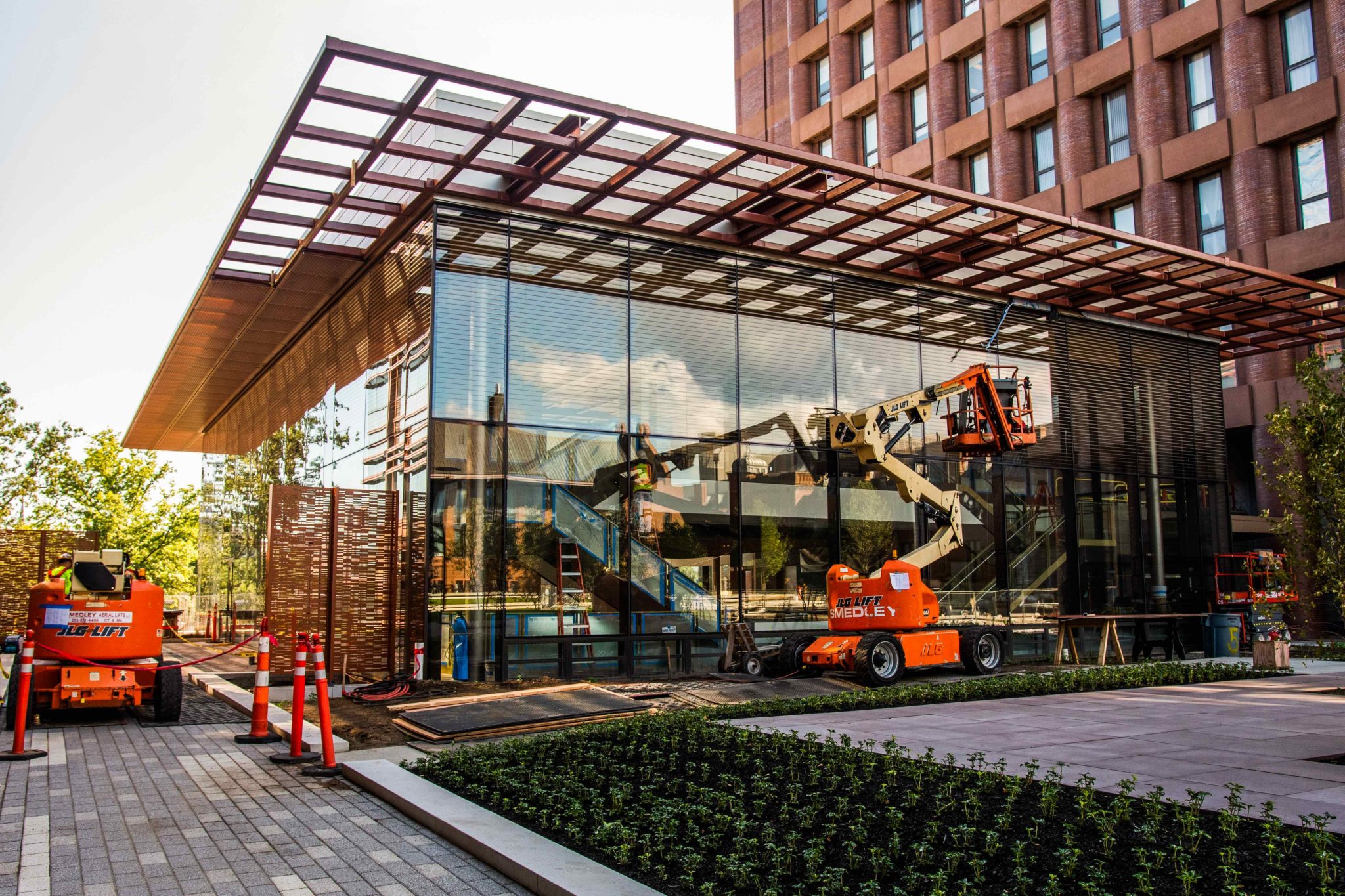
Lukas Flippo
Most Yale professors began the first day of classes just as they had any other year: a new crowd of eager students but the same class and the same lecture hall. But for Vivian Irish, professor of Molecular, Cellular and Development Biology, something was very different this time around.
This year, instead of the Osborn Memorial Laboratories, Irish delivered the inaugural lecture of BIOL103 in the newly minted Yale Science Building, with paint still fresh and laboratories yet to be explored.
In the O.C. Marsh Lecture Hall, Irish described the building’s open space as an impressive room, capable of seating the nearly 500 eager premeds and intended biology majors who frequent her course. Her course is one of the many which will take advantage of the new building, constructed in a wave of efforts to increase and renovate University classrooms as students question Yale’s ability to facilitate its expanding student body.
“Buildings need to be modified and improved. Part of it is keeping our infrastructure strong,” said University Registrar Emily Shandley when asked about the new Yale Science Building as well as impending construction projects around campus. “There are multiple reasons for that project… and part of the benefit of the project will be additional instructional space.”
The Yale Science Building — a 280,300 square foot, seven story structure located at the site of the former J.W. Gibbs Laboratory Building — also contains labs and greenhouses. Irish’s lab was the first to move into the building, and a dozen others followed close behind in August. The University will host a formal opening at the end of October.
The building’s O.C. Marsh Lecture Hall, unlike other large spaces such as the Law School Auditorium, is to be primarily used for instruction of classes housed in the Faculty of Arts Sciences. Shandley said this status allows her office direct scheduling control of the building, lessening the chance of potential scheduling conflicts in the space.
Shandley stressed the need for structural upgrades across Yale’s campus for a variety of reasons — including the desire for up-to-date facilities that rival those of peer institutions.
The renovation of 320 York Street, set to convert the former of Hall of Graduate Studies into a humanities hub by summer 2020, will offer a mix of lecture and seminar spaces in addition to housing a variety of departments and programs. And the Tobin Center for Economic Policy — slated to open in 2022 on Hillhouse— will offer a new home to the economics department, which offers Yale’s most popular major for the class of 2019.
Economics department chair Tony Smith said that economics has long needed an updated space as the department expands and hires more faculty members.
“The department of economics has felt a need for a while to build additional modern space to house a modern economics dept,” Smith said. “So many of our competitors around the country — MIT Princeton, Northwestern … have built modern new buildings, and I think it’s important for us to try and compete with these other departments.”
This shopping period, several of Yale College lecture courses have experienced lack of classroom space. Undergraduates sat on the floor of Linsly-Chittenden Hall room 102 to attend Ethnicity, Race and Migration professor Daniel HoSang’s introductory lecture to “Race, Politics and the Law,” and “Sickness and Health in African American History,” taught by assistant professor of History of Science & History of Medicine and African American Studies Carolyn Roberts, quickly relocated from LC to a larger room in William Harkness Hall to accommodate the high demand.
Shandley said the University typically refrains from moving classroom locations in the first couple weeks of classes, as course numbers frequently shift. She added that the appearance that Yale lacks sufficient classroom space is a result of complex scheduling patterns, which often place large lecture courses at popular times. These scheduling choices often mean that lecture halls are oversubscribed.
“I think quite honestly the University has a lot of space,” Shandley said. “It’s not just space but when we are offering courses. If we offer courses at a variety of times across the day, but [also] across the week, we would have enough room. If we are concentrating courses at very specific time patterns, it’s going to be more difficult.”
Psychology professor Nick Turk-Browne’s Introduction to Psychology course as well as economics professor Steven Berry’s Introduction to Microeconomics will be taught in the O.C. Marsh Lecture Hall this fall.
Carly Wanna | carly.wanna@yale.edu







